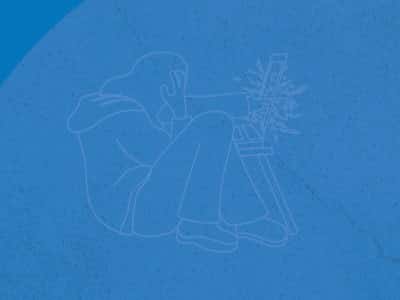What Is Polydrug use?
Using multiple substances is a widespread problem among people with substance use disorders (SUDs) and particularly among young people.
Multiple substances can be a particularly dangerous cocktail.
Polysubstance use disorder is “a significant predictor of a drug overdose,” according to Oxford University Press’s Addiction Medicine.
Combined drug intoxication and multiple drug intake are two causes of death stemming from polysubstance or polydrug use and abuse.
Plenty of lives have been lost to such misfortunate combinations:
- Actor Heath Ledger died at 28 from acute intoxication with oxycodone, hydrocodone, alprazolam, and other substances in his system.
- Actor Philip Seymour Hoffman died at 46, not long after taking heroin, cocaine, amphetamines, and benzodiazepines.
- Elvis Presley died at 42. On the record, it was cardiac arrhythmia, but the toxicology tests found 14 drugs in his body.
Most frequently polysubstance use refers to illicit use of multiple drugs, but it can also include legal substances. Alcohol and tobacco tend to be the most common, as well as prescription and over-the-counter (OTC) medicines.
Dangers Associated with Polysubstance Abuse
The dangers of combining drugs are the same as abusing a single drug, but often amplified. It’s also a common problem.
According to the U.S. surgeon general’s 2016 Facing Addiction in America report, 20.8 million Americans ages 12 and older had some sort of substance use disorder. Out of that 20.8 million, they found:
- 41.2% also had a mental illness
- 13% had both an alcohol and an illicit drug use disorder
Mental illness and substance use commonly co-occur, but not always.
People with schizophrenia are three to four times more likely to smoke tobacco. An estimated 30-60% of alcohol use disorder patients may also have post-traumatic stress disorder (PTSD).
It remains unclear why mental disorders and substance use sometimes go hand in hand. It could be that mental illness makes one more vulnerable to substance use. It could also be that substance use disorder can exacerbate mental illness for some people.
Multiple drugs typically factor in a significant amount of overdose deaths. The Centers for Disease Control and Prevention found:
- 96% of all overdose deaths mentioning alprazolam or diazepam also included other drugs
- 50% of overdose deaths involved methamphetamine (meth)
- 70% included fentanyl or heroin.
Fentanyl factors into 40% of cocaine deaths and 32% of heroin overdoses. The heroin and cocaine speedball is another dangerous combination: 34% of cocaine-linked deaths also involved heroin.
When it comes to teen polydrug abuse, alcohol and tobacco are most used, followed by marijuana. (Alcohol, tobacco, and/or marijuana tend to be common drug combinations, and not just for teens.)
Vaping both tobacco and marijuana is a more recent development. People have raised alarms about that trend, but the data is still trickling in as to the true extent of its risks. Because some deaths and illnesses have occurred after vaping, however, the general consensus is young people, in particular, should stay away from the vape.
Youths tend to experiment more. In addition to alcohol and cannabis, cocaine and ecstasy (Molly or MDMA) are other combinations adolescents commonly experiment with. The long-term consequences of such a pairing remain somewhat unclear, but the younger a person is when they experiment with drugs, the greater the likelihood of developing a substance use disorder.
Consuming alcohol and other drugs can be a risky cocktail. Mixing opioids, alcohol, and/or benzodiazepines can slow breathing to dangerous levels.
Methadone, paired with anticonvulsants, certain antibiotics, or antipsychotics, can cause sudden and intense withdrawal symptoms. Some antifungal drugs when paired with methadone can bring on serotonin syndrome (high levels of serotonin in the body), leading to seizures and even death.
Prescription polydrug use can cause problems by altering the metabolism and excretion of other drugs in the body.
Why People Take Multiple Substances
Reasons for multiple drug use vary. It can be to chase a more powerful high, but it can also be to self-medicate (for bipolar disorder or depression, for example). Other reasons include:
- To reduce undesirable side effects of a drug
- To help with chronic pain
- To get to sleep
- To bow to peer pressure
- Because it’s available
Each person is affected differently, but generally taking more or multiple drugs increases the effect and the risk of harm.
Using multiple drugs together can also result in synergism, where one drug makes another (or others) more potent.
Risks of polydrug use include:
- Greater intoxication
- Worse hangovers
- More risky behaviors
- More accidents
- Fights and violence
- Dependency
- Mental health problems (depression)
- Medical problems (liver or heart disease)
- Overdose (some drugs, like opioids, can slow or stop breathing)
Combining multiple substances is a potentially dangerous risk. Young adults and teens may think it’s perfectly okay to mix something like amphetamines and ecstasy but it can lead to overstimulation, overheating dehydration, heart and kidney strain, and even death.
Mixing alcohol and stimulants may seem like a way to keep the party going, but amphetamines or cocaine can reduce the effects of alcohol and lead to binge drinking or other impulsive and potentially dangerous behaviors.
Older adults face their own polydrug risks. With multiple prescriptions, the risk of dangerous interactions and complications multiply.
Sources
Medical disclaimer:
Sunshine Behavioral Health strives to help people who are facing substance abuse, addiction, mental health disorders, or a combination of these conditions. It does this by providing compassionate care and evidence-based content that addresses health, treatment, and recovery.
Licensed medical professionals review material we publish on our site. The material is not a substitute for qualified medical diagnoses, treatment, or advice. It should not be used to replace the suggestions of your personal physician or other health care professionals.






